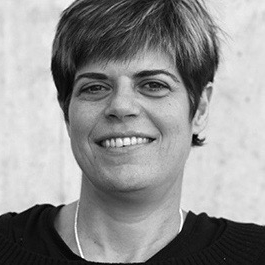Naama Barkai
Weizmann Institute of Science, Rehovot
Dept. Molecular Genetics
Supervisor ESR 3
naama.barkai@weizmann.ac.il
Research Interests
A fundamental property of living cells is their ability to activate or repress a variety of processes depending on external or internal conditions. This ability to switch between programs in a regulated manner entails information processing capacity, which is provided by bio-molecular circuits composed of interacting genes and proteins. Studies in my lab our motivated by our long-term interest in defining general principles that guide the design and function of these circuits. We are particularly intersected in the consequences of variability (unavoidable ‘noise’) on circuit. Having it work in a highly variable environment is a central prerequisite from biological circuits, and a key distinction of biological information processing, relative to computation performed by man-made machines. Indeed, biological systems show high variability at multiple scales: their functions depend on the activity of molecules that are present at low numbers, leading to stochastic noise; variations in environmental conditions modify reaction rates, and genetic polymorphisms are often abundant within populations. How is this variability overcome to yield reproducible outputs, and what biological processes actually make beneficial use of this variability?
Our work addresses these questions, focusing on several biological context. In a series of studies, we used robustness as a benchmark for elucidating principles by which biological circuits function. This proved especially effective in studying patterning processes that take place during the early development of multi-cellular organisms. We further described circuits which rely on variability for optimal functioning, a case in point being circuits that function to maintain nutrient homeostasis. In a complementary research program, we address these questions in the context of large-scale cellular networks. For example, in recent years our work revealed the epigenetic circuit that maintains expression homeostasis during DNA replication.
Keywords & Model Systems
Robustness, noise , gene repression, epigenetic circuits
S. Cerevisiae (budding yeast)
Scientific CV
| Year | Function | Institution |
|---|---|---|
| since 2008 | Full professor | Dept. Molecular Genetics, Weizmann Institute, Rehovot, Israel |
| 2006-2008 | Associate professor | Dept. Molecular Genetics, Weizmann Institute, Rehovot, Israel |
| 1990-2006 | Independent group leader | Dept. Molecular Genetics, Weizmann Institute, Rehovot, Israel |
| 1995-1999 | Postdoctoral researcher | Princeton University, USA |
| 1990-1995 | PhD in Physics | Hebrew University, Jerusalem, Israel |
| 1987-1990 | Undergraduate studies (Diploma in physics and mathematics) | Hebrew University, Jerusalem, Israel |
This project has received funding from the European Union’s Horizon 2020 Research and Innovation programme under the Marie Skłodowska-Curie grant number 860675.


